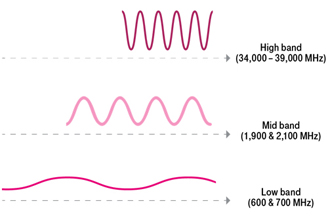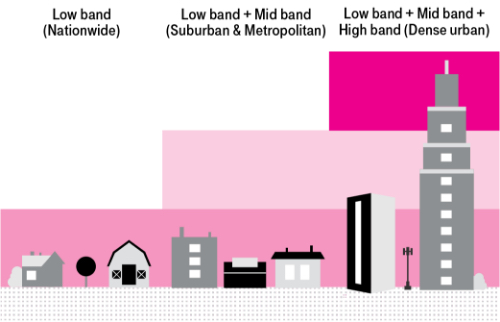
Spectrum: it’s the oxygen of networks.
What is spectrum?
All wireless communications—TV and radio broadcasts, GPS data, cell service, and more—travel over the air via naturally occurring radio waves. But the range of available frequencies (spectrum) is finite. That’s why spectrum is regulated by the Federal Communications Commission (FCC.) For more information, download our electromagnetic spectrum PDF.
The FCC licenses these radio frequencies to public and private organizations—and requires that mobile carriers do not cause interference with other spectrum license holders.
The federal government also makes sure that local first responders and national defense interests have access to their own spectrum through FirstNet®.

Our multi-spectrum strategy
When it comes to spectrum, there are unique strengths to using low-band, mid-band, and high-band (or millimeter wave) frequencies. That’s why we use all three. While higher frequencies can transmit more information over short distances, lower frequencies travel farther and are less-hindered by obstacles.


Multi-spectrum benefits
34,000 – 39,000 MHz (millimeter wave) spectrum is used to meet high demands of customers in dense urban areas. Our mid- and low-band spectrum can be used in urban, suburban and even our most rural communities. By making the most of spectrum, we're working to bridge the rural and economic digital divides.


